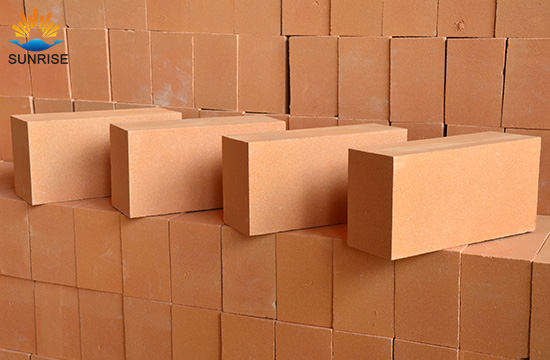Product Search
Quickly find the product you need
Products List
Refractory Knowledge
- Production Process Methods of Refractory
- Manufacturing process of fire clay insula
- Classification of mullite insulation bric
- The Use of Mullite Insulation Bricks
- Aggregates Used For the Production of Ins
- Thermal Shock Resistant Fireproof Heat In
- the development of the refractory brick i
- Refractory material production process
- Pros and cons of lightweight mullite bric
- Pollution and treatment in the production
Products List
- Phone:0086-370-63838939
- Email:sales@sunriserefr.com
- Office Address: No.36 Fengchan Road Of Zhengzhou, Henan, China (Mainland)
Refractoriness of Insulation Bricks
Date:2016-05-18 10:17 | From:Zhengzhou Sunrise Refractory | Author:admin
Insulation brick is a type of insulation material. It can reduce heat loss, save energy, reduce the weight of the furnace and reduce the total cost of the furnace.

The pores in insulation bricks are generated by adding lightweight aggregates such as combustible materials, blowing agent and hollow balls. Those pores have big size, good insulation performance and mechanical properties. If increasing the volume fraction, many large pores will gather together and affect the insulation performance. However, insulation bricks have small specific surface area and low specific surface energy. Therefore, it has good thermal stability and low potential of deterioration.
The main properties of insulation brick include bulk density, porosity, thermal conductivity, service temperature and mechanical strength. Just a few insulation materials can fully meet the requirements.
According to the service temperature, it can be divided into low-temperature type (<900℃, diatomite brick), medium-temperature type (1000℃, fire clay insulation brick) and high-temperature type (>1200℃, high alumina insulating brick)
According to bulk density, it can be classified into sub-light weight brick (1.00-1.39 g/cm3), light weight brick (0.4-1.0 g/cm3) and ultra-light weight brick (<0.49 g/cm3).
According to the shape, it can be divided into fibrous materials, porous materials and granular materials.
The service temperature and features of the insulation bricks are as followings.
| Service temperature/℃ | Features | |
| Diatomite Insulation Brick | <900 | made from natural porous materials; low thermal conductivity; good insulation performance; |
| Fire clay insulation brick | 900-1100 | Mainly made by adding combustible substances; has a wide application; |
| High alumina insulating brick | 1100-1250 | can contact flame directly; has a wide application; |
| Cordierite brick | 1300 | Has low thermal expansion and spalling résistance; |
| Corundum insulation brick | ≥1600 | Has a high content of Al2O3; mainly composed of α-Al2O3; can be used in a reducing atmosphere; |
| Silica insulation brick | 1220-1550 | High softening temperature under load,; good thermal stability; |
| Anorthite brick | 1200-1300 | Mainly composed of CaO•Al2O3•SiO2; low bulk density; good resistance to cracking; |
| Alumina bubble brick | 1350-1500 | Made by the bubbling method; mainly used for the insulation of furnaces. |

